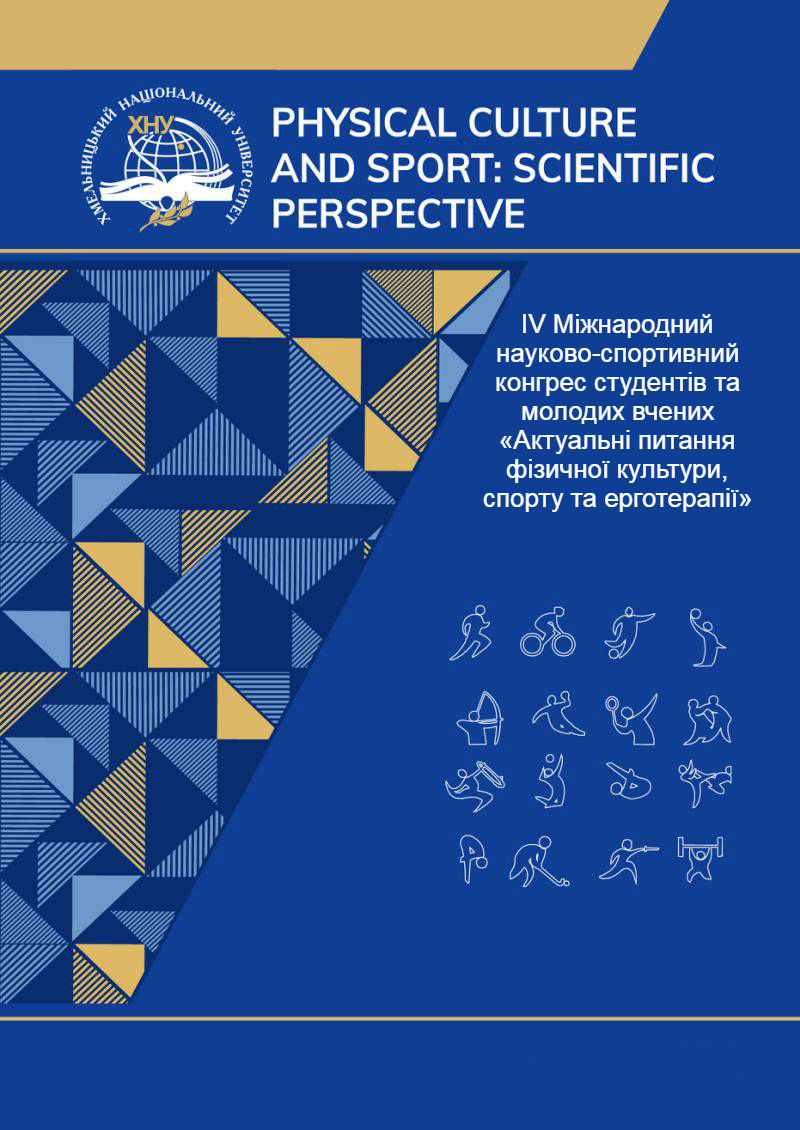STRATEGIC DIRECTIONS FOR STRENGTHENING THE PSYCHOPHYSICAL STATE OF SCHOOLCHILDREN BY INCREASING THE LEVEL OF PHYSICAL ACTIVITY IN THE CONTEXT OF SOCIAL CHANGE AND MARTIAL LAW
DOI:
https://doi.org/10.31891/pcs.2024.1.37Keywords:
physical activity, schoolchildren, strategic directions, COVID-19, martial lawAbstract
The article is devoted to the problem of ensuring a minimum level of physical activity among schoolchildren in the current conditions of social challenges, particularly during the period of recovery from the COVID-19 pandemic and during martial law in Ukraine. The article analyses the main factors influencing the decline in physical activity among schoolchildren. In addition, it is emphasized that existing physical education programs only partially address these problems, which requires the development of new methods, tools, and approaches to this process.
The main purpose of the article is to identify effective means and methods that will help improve the physical condition of schoolchildren and their psychological well-being in the current conditions. The tasks of the study are highlighted, including the search for and substantiation of methods to increase the integration of physical activity into the educational process of general secondary education institutions.
To increase the level of physical activity of students in schools, it is necessary to introduce innovative teaching methods. The recommendations include changing physical education programs, taking into account the psychological state of students, and introducing them to the educational preparation of future teachers to work in the modern world.
As part of the study, we identified strategic directions for increasing physical activity in the educational environment of schoolchildren. These strategic directions include changing educational programs, introducing better teacher training, creating more inclusive sports programs, and much more. These areas represent a comprehensive approach to engaging students in an active lifestyle. This includes working with local sports clubs and using digital technologies to improve access to exercise.
The paper concludes with a recommendation to change the approach to physical education, taking into account the post-conflict period and martial law in Ukraine. The authors emphasize the need to develop comprehensive programs and strategies that would meet the current learning environment and promote healthy lifestyles among schoolchildren. Further research in this area should be aimed at assessing the effectiveness of the innovations implemented and their adaptation in times of war.
References
Bezverkhnya H. (2013). Shlyakhy zabezpechennya optymalʹnoyi rukhovoyi aktyvnosti uchniv serednʹoho shkilʹnoho viku. Psykholoho-pedahohichni problemy silʹsʹkoyi shkoly, 45, 329 s. [in Ukrainian]
Halan, Y.A. (2023). Fizychna kulʹtura i sport yak zasib pidvyshchennya rivnya motyvatsiyi do oboronozdatnosti derzhavy. Naukovyy chasopys Natsionalʹnoho pedahohichnoho universytetu imeni M. P. Drahomanova. Seriya 15. Naukovo-pedahohichni problemy fizychnoyi kulʹtury (fizychna kulʹtura i sport), (2(160), 69-75. https://doi.org/10.31392/NPU-nc.series15.2023.02(160).15
Moskalenko, N., Reshetylova, V., & Mykhaylenko, YU. (2018). Suchasni pidkhody shchodo pidvyshchennya rukhovoyi aktyvnosti ditey shkilʹnoho viku. Sportyvnyy visnyk Prydniprovʺya, (1), 203-208.
Pavlenko YE. A. (2018). Rukhova aktyvnistʹ yak nevidʺyemna skladova formuvannya zdorovoho sposobu zhyttya student·sʹkoyi molodi. Naukovi zapysky Berdyansʹkoho derzhavnoho pedahohichnoho universytetu, (1), 191-195.
Stadnyk, V. (2022). Pedahohichni osnovy psykholohichnoho zabezpechennya protsesu fizychnoho vykhovannya zdobuvachiv vyshchoyi osvity v umovakh voyennoho stanu. Innovatyka u vykhovanni, (16), 132-140. https://doi.org/10.35619/iiu.v1i16.488
Stolyarchuk, O. A. (2022). Navchannya ta psykhoemotsiynyy stan ukrayinsʹkykh pidlitkiv v umovakh viyny v ukrayini. Naukovyy visnyk Uzhhorodsʹkoho natsionalʹnoho universytetu. Seriya: Psykholohiya, (1), 115-120. https://doi.org/10.32782/psy-visnyk/2022.1.22
Tomenko, O. A. (2013). Rivenʹ rukhovoyi aktyvnosti pidlitkiv ta shlyakhy yoho pidvyshchennya na osnovi vykorystannya zakhodiv ozdorovcho-rekreatsiynoho spryamuvannya. Slobozhansʹkyy naukovo-sportyvnyy visnyk, (3), 19-24.
Galan, Y., Moseychuk, Y., Dotsyuk, L., Kushnir, I., Moroz, O., Vaskan, I., Yarmak, O., Kurnyshev, Y., Lohush, L., Bohdanyuk, A., Nataliia, K., Brazhaniuk, A., Baіdіuk M., & Beshlei, O. (2024). Un enfoque integrado para corregir el estado físico y psicoemocional de estudiantes que trabajan con niños migrantes (An integrated approach to Correcting the Physical and Psychoemotional State of female students working with migrant children). Retos, 51, 988–997. https://doi.org/10.47197/retos.v51.101005
Saavedra-Rodríguez, L., & Feig, L. A. (2013). Chronic social instability induces anxiety and defective social interactions across generations. Biological psychiatry, 73(1), 44–53. https://doi.org/10.1016/j.biopsych.2012.06.035
Vovchenko, O. (2023). Wartime panic attacks in children with special educational needs. Scientific Bulletin of Mukachevo State University. Series “Pedagogy and Psychology”, 9(2), 48-56. https://doi.org/10.52534/msu-pp2.2023.48





